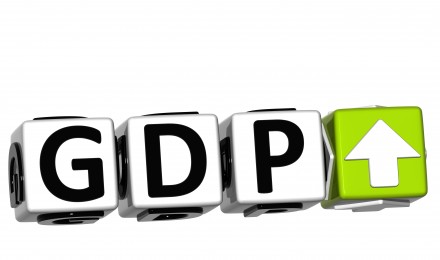The number of initial jobless claim applications decreased 9,000 to 346,000 for the week ended June 22. The Labor Department revived the prior week figure to 355,000. The data provide another positive sign that the economy continues to recover.
Most economists projected a number below the 350,000 level. Bloomberg’s survey of 49 economists returned a consensus estimate of 345,000, with projections ranging from 330,000 to 365,000.
The four-week moving average, which provides a less volatile reading de, declined to 345,750—a 2,750 drop from the previous week.
Details of report
For the week ending June 15, the advance seasonally adjusted insured unemployment rate remained stable at 2.3 percent, decreasing 1,000 to 2,965,000. The four-week moving average for this metric fell by 9,250 to 2,973,250, compared to the revised average of 2,982,500 the previous week.
Data for the week ending June 8 show that the total number of Americans receiving unemployment benefits increased 23,146 to 4,556,706 from the prior week. In the same week of 2012, 5,890,083 individuals claimed benefits under all programs.
The fives states with the highest number of initial claims are California, Pennsylvania, Florida, Michigan and Maryland.
Illinois, New York, Georgia, Missouri and Tennessee recorded the biggest decreases in applications.
The number of people receiving Emergency Unemployment Compensation (EUC) rose by 23,147 to 1,707,109. In 2012, 2,645,554 Americans claimed EUC for the same period.
Employers maintaining workforce
Companies continue to demonstrate confidence that consumer demand will continue along with improvements in the housing market and more optimistic consumers. Hope remains that companies will make a dent in the 7.6 percent unemployment rate and start adding workers to their payrolls.
The Federal Reserve labels the unemployment rate as “elevated” and has made 6.5 percent rate their benchmark for creating sustainable economic growth.
The Fed will closely monitor upcoming economic data to decide whether or not to scale down the stimulus program sometimes this year and phase it out in 2014.
Investors, economists, business leaders and policymakers monitor weekly applications for jobless benefits—job firings—to help forecast movement in the economy. In May, companies hired 175,000 new workers but the unemployment increased to 7.6 percent because more workers entered the workforce.
Personal income and consumption
In April, personal income ticked up 0.1 percent. Commerce Department data reveal a 0.5 percent increase in personal income in May. This number exceeds analysts’ projections of a 0.2 percent increase. It also demonstrates that Americans have more money to spend—noted by the 0.3 percent increase in personal consumption expenditures in May.> In April, expenditures declined 0.3 percent.
The latest data may foretell better economic growth than expected for the second quarter (Q2) after final revisions reduced Q1 growth to 1.8 percent .
The number of initial jobless claim applications decreased 9,000 to 346,000 for the week ended June 22. The Labor Department revived the prior week figure to 355,000. The data provide another positive sign that the economy continues to recover.
Most economists projected a number below the 350,000 level. Bloomberg’s survey of 49 economists returned a consensus estimate of 345,000, with projections ranging from 330,000 to 365,000.
The four-week moving average, which provides a less volatile reading de, declined to 345,750—a 2,750 drop from the previous week.
Details of report
For the week ending June 15, the advance seasonally adjusted insured unemployment rate remained stable at 2.3 percent, decreasing 1,000 to 2,965,000. The four-week moving average for this metric fell by 9,250 to 2,973,250, compared to the revised average of 2,982,500 the previous week.
Data for the week ending June 8 show that the total number of Americans receiving unemployment benefits increased 23,146 to 4,556,706 from the prior week. In the same week of 2012, 5,890,083 individuals claimed benefits under all programs.
The fives states with the highest number of initial claims are California, Pennsylvania, Florida, Michigan and Maryland.
Illinois, New York, Georgia, Missouri and Tennessee recorded the biggest decreases in applications.
The number of people receiving Emergency Unemployment Compensation (EUC) rose by 23,147 to 1,707,109. In 2012, 2,645,554 Americans claimed EUC for the same period.
Employers maintaining workforce
Companies continue to demonstrate confidence that consumer demand will continue along with improvements in the housing market and more optimistic consumers. Hope remains that companies will make a dent in the 7.6 percent unemployment rate and start adding workers to their payrolls.
The Federal Reserve labels the unemployment rate as “elevated” and has made 6.5 percent rate their benchmark for creating sustainable economic growth.
The Fed will closely monitor upcoming economic data to decide whether or not to scale down the stimulus program sometimes this year and phase it out in 2014.
Investors, economists, business leaders and policymakers monitor weekly applications for jobless benefits—job firings—to help forecast movement in the economy. In May, companies hired 175,000 new workers but the unemployment increased to 7.6 percent because more workers entered the workforce.
Personal income and consumption
In April, personal income ticked up 0.1 percent. Commerce Department data reveal a 0.5 percent increase in personal income in May. This number exceeds analysts’ projections of a 0.2 percent increase. It also demonstrates that Americans have more money to spend—noted by the 0.3 percent increase in personal consumption expenditures in May.> In April, expenditures declined 0.3 percent.
The latest data may foretell better economic growth than expected for the second quarter (Q2) after final revisions reduced Q1 growth to 1.8 percent .







